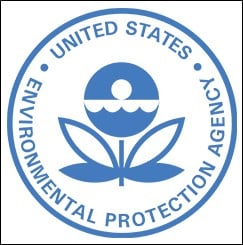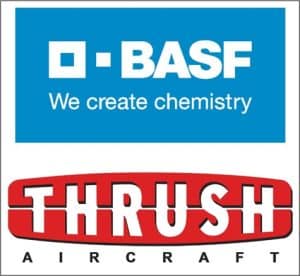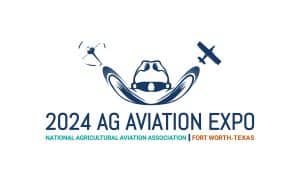Click on the article title below to be taken directly to the article. After you’re done reading the article, click “Back to Top” at the bottom to be brought back to the Table of Contents.
Table of Contents
NAAA Recommends EPA Remove Daily Acreage Restrictions for Aerial Applications of Paraquat

Earlier this week, NAAA submitted comments to EPA recommending they remove the restrictions that prevent aerial applicators from treating more than 350 acres per day when they apply paraquat for herbicidal purposes. These restrictions were put in place with EPA’s 2021 interim decision (ID) on paraquat. The ID allowed only cotton and soybean desiccation applications to be conducted on unlimited acres daily. This restriction was due to a concern over aerial applicators inhaling paraquat while applying it.NAAA’s comments were in response to a court-ordered EPA public notice that reconsidered the 2021 ID. Soon after releasing the ID, EPA was sued by numerous anti-pesticide groups alleging that the ID failed to properly address the risk of Parkinson’s disease from paraquat. EPA’s reconsideration dismissed the claims, stating that there is no credible data to support that paraquat causes Parkinson’s disease.
The reconsideration concluded by requesting public comments relevant to the importance of paraquat and EPA’s required mitigations when using it. NAAA took that invitation to let EPA know how important paraquat is for applications as both an herbicide and a desiccant and that the 350 acres per day restriction for herbicide applications of paraquat can be catastrophic for growers battling resistant weeds, particularly in the South.
NAAA used EPA’s paraquat inhalation exposure data to suggest higher aerial application acreages based on the current paraquat application rate being used. These suggested higher acreages ensure applicator safety while also better meeting growers’ demands. NAAA also suggested that all crops should have unlimited daily acres for desiccation, not just cotton and soybeans. Click here to read NAAA’s full comments. NAAA will continue to follow EPA’s paraquat activities as lawsuits continue to threaten its registration.
Back to top
NAAA Fly Safe Gets Sent Out by FAA Safety Team

Monday’s Fly Safe message was noticed by the FAA Safety Team (FAAST), who sent a notification out to all of their subscribers with a link to the Fly Safe. It will also be posted to FAAST’s Instagram account in a few days. Click here to see the FAAST posting and here to see the original Fly Safe. NAAA appreciates FAAST recognizing the importance of the Fly Safe message by sending it out to a broader audience..
Back to top
NAAA Offering Three Scholarship Programs in 2024
NAAA, with the support of several Allied members, is offering three scholarship programs in 2024, totaling $29,000 in scholarship funds. Whether you’re a student, an aspiring ag pilot or an ag pilot interested in turbine training, we have scholarship funds for you! Please contact NAAA at information@agaviation.org or (202) 546-5722 for clarification about any of the scholarship program requirements.

NAAA’s ‘Ag Wings of Tomorrow’ Scholarship
Four $5,000 scholarships are available for aspiring ag aviators who are sponsored by an NAAA Operator. The NAAA “Ag Wings of Tomorrow” Scholarship is back again this year, thanks to the generous support of BASF and Thrush Aircraft. The scholarship program is offering $20,000 in aid to assist four aspiring ag pilots in their journey. All funds are in U.S. dollars.
The goal of NAAA’s “Ag Wings of Tomorrow” Scholarship Program is to strengthen the aerial application industry by helping operator members bring new pilots into the profession and help fund their training. Applicants must be sponsored by an NAAA Operator member. Scholarship recipients may use the proceeds for flight training or aviation or ag-related coursework at a university, college, community college or other institution of higher learning. A stipend for a trainee in an NAAA Operator-sponsored apprentice program is also permissible. The scholarship program is administered by NAAA and funded by educational grants from BASF and Thrush Aircraft.
Investing in aspiring ag aviators is a win-win for NAAA Operator members and individuals seeking training funds to support their pursuit of becoming a professional ag pilot.
How to Apply & Deadline
To be considered for the 2024 scholarship, along with completing the two-part application, every applicant must submit:
- A letter of recommendation from the NAAA Operator member sponsoring the applicant.
- An essay of 250 words or less explaining why the applicant wants to pursue a career in agricultural aviation and how they would use NAAA’s “Ag Wings of Tomorrow” Scholarship to further their education and training.
- A one-page résumé or list of activities detailing all agricultural and aviation experiences, education and training.
- Applicants must apply using the online application process. The deadline is Aug. 31, 2024. Learn more about the 2024 NAAA “Ag Wings of Tomorrow” Scholarship and review the instructions here.
While the applicant must be sponsored by an NAAA Operator member, NAAA membership is not a prerequisite for applying for the “Ag Wings of Tomorrow” Scholarship. Still, becoming an NAAA Associate member is an excellent way for candidates to learn more about the industry and augment their training.
Restrictions: Applicants can apply for the NAAA “Ag Wings of Tomorrow” Scholarship or the Charles Stokes Memorial Turbine Training Scholarship, but not both in the same year.
NAAA Operator members may only sponsor one NAAA “Ag Wings of Tomorrow” Scholarship applicant a year. They can also sponsor a Charles Stokes Memorial Turbine Training Scholarship applicant in the same year, but the applicants can’t be the same person applying for both scholarships in the same year.
Charles Stokes Memorial Turbine Training Scholarship
Two $3,000 scholarships are available to eligible NAAA Operator and Pilot members for turbine transition training through the 2024 Charles Stokes Memorial Turbine Training Scholarship. The NAAA scholarship program was established in 2023 and has been made possible thanks to a generous educational grant funded by Jim Mills of Turbines Inc., who established the scholarship in memory of Charles Stokes.
The Charles Stokes Memorial Turbine Training Scholarship was created to provide training funds to agricultural pilots with a minimum of 150 hours of ag time for use at a turbine transition course or program. The scholarship must be used for turbine flight training at a qualified flight school or turbine training facility. All funds are in U.S. dollars.
Eligibility
Applicants must:
- Have a minimum of 150 hours of ag time.
- Be a Pilot, Affiliated Operator or Operator member of NAAA.
- Be sponsored by an NAAA Operator member in the Operator dues category who will write a letter of recommendation on their behalf. (Operator applicants may not sponsor themselves; another NAAA Operator member would need to sponsor them.)
- How to Apply & Deadline
- Applicants must apply using the online application process. The deadline is Aug. 31, 2024. Further details and a link to the online application is available here.
Restrictions: Applicants may only apply for one NAAA pilot-training scholarship a year – either the Charles Stokes Memorial Turbine Training Scholarship or the NAAA “Ag Wings of Tomorrow” Scholarship, but not both in the same year.
NAAA Operator members may only sponsor one Charles Stokes Memorial Turbine Training Scholarship annually. They can sponsor an NAAA “Ag Wings of Tomorrow” Scholarship applicant in the same year, but the applicants can’t be the same person applying for both scholarships.
NAAA Support Committee Scholarship
The NAAA Support Committee will award a $2,000 scholarship as top prize, and Covington Aircraft Engines has generously agreed to sponsor a $1,000 scholarship. All funds are in U.S. dollars.
How to Apply & Deadline
Submissions must be an essay of at least 1,500 words or a 5-minute multimedia presentation. Submissions are now online. The deadline is Sept. 15, 2024. Learn more about the Support Committee Scholarship and review the instructions here.
2024 Essay Topic: What are the biggest obstacles to the ag aviation industry in your area? Discuss how they can be overcome.
The 2024 Support Scholarship Contest is open to any individual sponsored by an NAAA member. The scholarship is not restricted to individuals pursuing a “flying career” and can be used toward any educational pursuit beyond high school (at any age). Previous winners are not eligible to compete.
Back to top
Flying in the Wire and Obstruction Environment Course will be held Saturday, Nov. 16

After two years of popularity, NAAA and NAAREF are bringing back the Flying in the Wire and Obstruction Environment Course on Saturday, November 16 beginning at 7:30 a.m. in Fort Worth, Texas. This course will be taught on the Saturday before the start of the 2024 Ag Aviation Expo, Nov. 18-21. Registration will open in July, but if you plan to attend the course, please book your hotel room to arrive on Friday, Nov. 15. For hotel booking details, click here; contact Lindsay Barber with any questions or hotel booking issues.
Flying in the Wire and Obstruction Environment Course, acclaimed by professional airplane and helicopter operators worldwide. This year’s course will be a full-day course again. The instructors give low-altitude aviators the essential skills needed to safely operate an aircraft in wire and obstruction environments. This course is for both aircraft and helicopter pilots. Learn how to identify signs of wires and why ag aviators hit wires they already knew were there. This course may very well save your life – wire strike accidents continue to harm the ag aviation industry. The most common cause of accidents in 2023 were wire strikes. They accounted for 28% of the total accidents and 67% of the fatal accidents.
The course will be taught by Utilities / Aviation Specialists Inc. (UAS), a unique group of aviation safety practitioners who provide safety auditing, specialized training, installation of safety management systems, and technical aviation consulting. They provide mission-specific expertise in specialized applications that require skill sets above those found in most routine transport operations. Sponsored by Old Republic Aerospace.
Back to top

